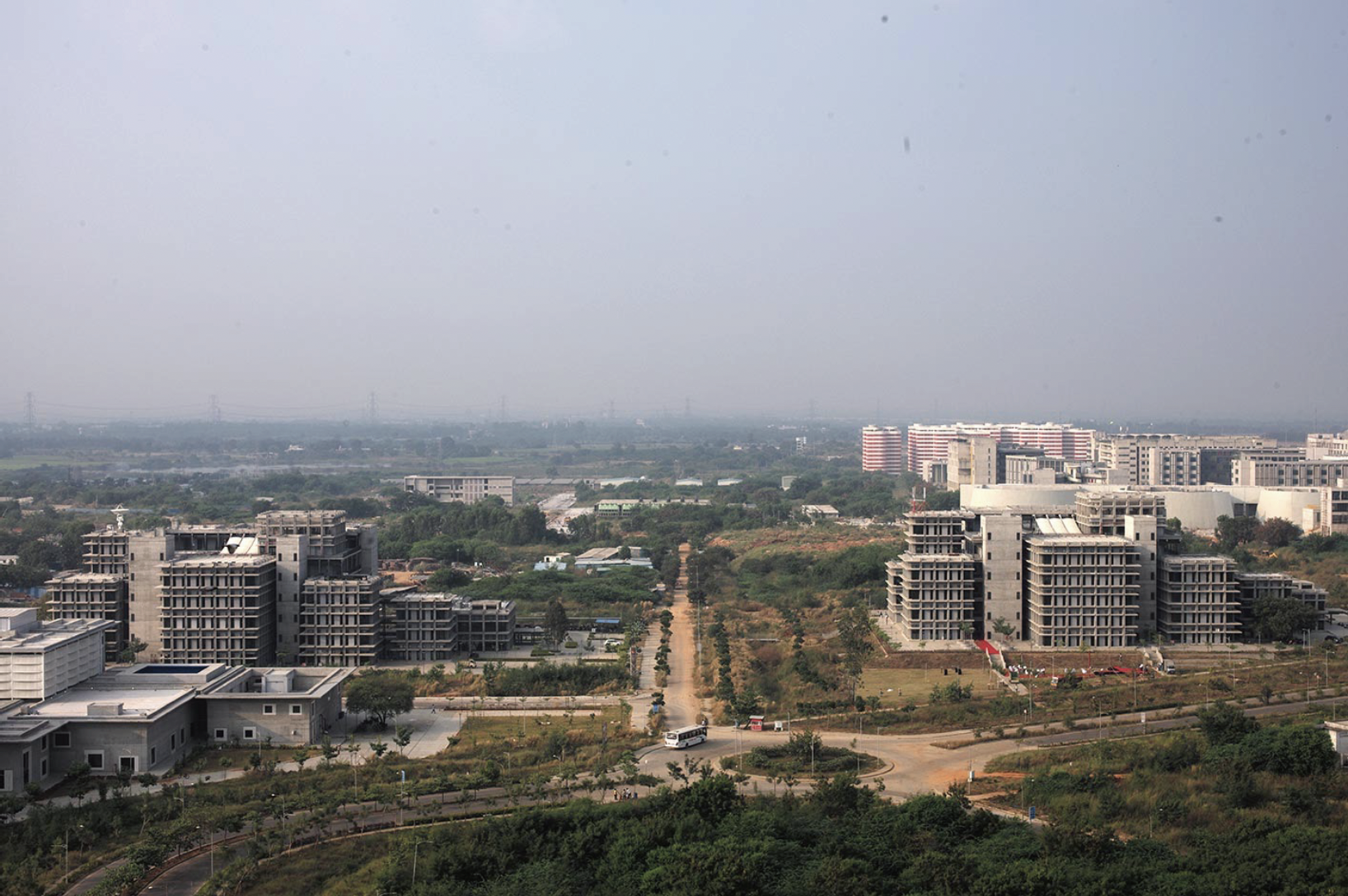Japanese experts design a world-class campus for IIT Hyderabad, one of India’s premier universities

The government of Japan, through the Japan International Cooperation Agency, provided support for the development of the new campus of IIT Hyderabad in the form of design work for six complexes. This work was done by experts from the Institute of Industrial Science, The University of Tokyo. The work commenced in 2011 and was completed earlier this year.
When Shinzo Abe, the then prime minister of Japan, visited India in 2007, he announced that the government of Japan would assist India with the design of the new campus of the Indian Institutes of Technology (IIT) in Hyderabad. Experts from UTokyo-IIS, started work on the design in 2011, and it has finally been completed this year.
The new IIT Hyderabad (IITH) sits on a roughly 2-square-kilometer campus about 60 kilometers from the city of Hyderabad in the south of India. With input from their counterparts in India, the Japanese experts designed six complexes to serve as the face of the university: the International Guest House, the Sports and Cultural Complex, the Technology Incubation Park, the Convention Center, the Research Centers Complex, and the Knowledge Center.
“Working on the Knowledge Center was particularly interesting,” says Yoshiyuki Kawazoe, who worked on the design. “This center is meant to serve not just as a library but also as a repository for all kinds of knowledge — an idea proposed by our Indian counterparts. I thought of creating a space that resembles a valley. By adjusting the structure of the lower floors, I created a space in which the floor height decreases as one moves toward the center. In this way, visitors have a panoramic view of the various forms of knowledge housed in the building.”

Knowledge Center Credit: Yoshiyuki Kawazoe Laboratory
Architectural model of Knowledge Center Credit: Yoshiyuki Kawazoe Laboratory
One design, for the Technology Incubation Park, proved so popular that two buildings bearing the same design have also been constructed. The Technology Incubation Park is intended to support start-ups based on research conducted at the university and to bridge the gap between academia and industry. The well-known Japanese automobile manufacturer Suzuki is currently setting up a lab at the center to encourage industry–academia collaboration.
Technology Incubation Park Credit: Yoshiyuki Kawazoe Laboratory
Although the design work was carried out in Japan, the experts involved visited IITH multiple times to assess conditions and check progress. “One of the challenges for us was adapting to the construction culture in India, which is quite different from that in Japan,” notes Kawazoe. “For example, wood is a key construction material in Japan, but timber is scarce in India, meaning we had to change our approach to rely on stone instead of wood. At the same time, I think we were quite successful in incorporating some distinctly Japanese elements into the architectural style — such as the emphasis on the intermediate spaces between the exteriors and interiors of buildings.”
With the help of Kawazoe and his colleagues at The University of Tokyo, the new IITH campus is shaping up to become a world-class center for education in science and technology. Furthermore, various initiatives for academic exchange between Japan and India are already underway on campus, such as a partnership for research on AI between IITH and Japan’s National Institute of Advanced Industrial Science and Technology (AIST).
“I am proud to have helped one of India’s leading universities build this wonderful campus. We have paved the way for further exchanges, some of which are already underway, and I am sure that the relationship between India and Japan will only grow stronger over the next 50 years.
Working on the IITH campus’s design helped me to appreciate the intimate relationship between architecture and climate, building materials, and society. This relationship differs between places, and so the approach to create a beautiful space also changes. This notion will be a great inspiration for my future activities. The more I work in different parts of the world, the more I realize the depth of architecture, and my interest in architecture only grows,” concludes Kawazoe.
Technology Incubation Park, proved so popular that two buildings bearing the same design have also been constructed.
Credit: Yoshiyuki Kawazoe Laboratory

Associate Professor Yoshiyuki Kawazoe


Comments
No comments yet.
Join by voting
How did you feel about the "Possible Future" depicted in this article? Vote on your expectations!
Please visit the laboratory website if you would like to learn more about this article.
Share